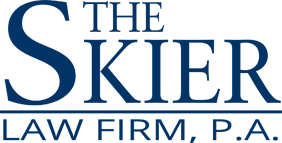A Florida inmate lost his appeal recently when he challenged the validity of the facial recognition software that was used to identify him during his trial and convict him of a crime. The man was charged with selling $50 worth of crack to undercover detectives. He argued unsuccessfully that the prosecution should have turned over information concerning other potential matches to the defense.
According to reports, the Jacksonville P.D. used a free face-matching software of undetermined quality after their leads had dried up. The defendant’s entire case centered around the defense that he was misidentified by the free software and his legal team attempted to force the prosecution to turn over information concerning other potential matches.
How Facial Recognition Software Works
Facial recognition is a bit of a misnomer. Even the best software conducts analyses of an individual’s face based on the identification of centroids. In order to do this, it must break the face down into multiple geometric regions where it identifies key markers on the face in order to come up with a fixed number of markers. These markers are then tabulated into a shape that is compared against other faces that have undergone the same analysis.
Since images of different sizes would yield necessarily different results, the ratio of the space between the markers is what is compared so that the shape created by the markers can be scaled against another photo.
Ideally, each image would be clear enough to give a unique marker matrix and, like a fingerprint, no two would be alike. But does it?
Racial Bias in Facial Recognition Software
As it turns out, not unpredictably, the software relies on contrast between colors in order to define and set forth markers to create a unique shape. In the case of faces that provide high contrast (like white faces), the system works quite well. Whether or not it creates a unique shape is still a matter of scientific debate. What is not a matter of scientific debate is that it struggles in situations where there is less facial contrast. In other words, those with darker skin are going to be harder for the software to identify and thus render results that are either inconsistent or inaccurate.
The Disclosure Issue
The other question that makes this case interesting is whether or not the prosecution should have turned over other potential results to the defense. In this case, the defense was aware that the software returned multiple matches and probably argue something along those lines during the trial. The prosecution may have responded with eyewitness testimony from the undercover cops who purchased the crack in the first place. The prosecution is technically supposed to turn over all evidence that is relevant to the case. But they are also the one determining what’s relevant and what isn’t.
During the appeal, the court is only allowed to overturn a verdict in the event that the procedural error likely changed the outcome of the trial. In this case, it may not have.
Talk to a West Palm Beach Criminal Defense Attorney
If you’ve been charged with a crime in the West Palm Beach area call the Skier Law Firm P.A. We can help you throughout each step of your case.

